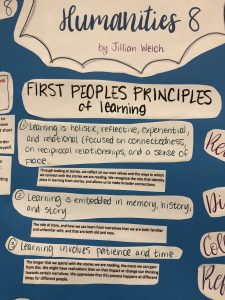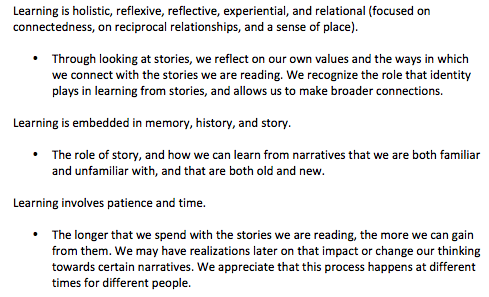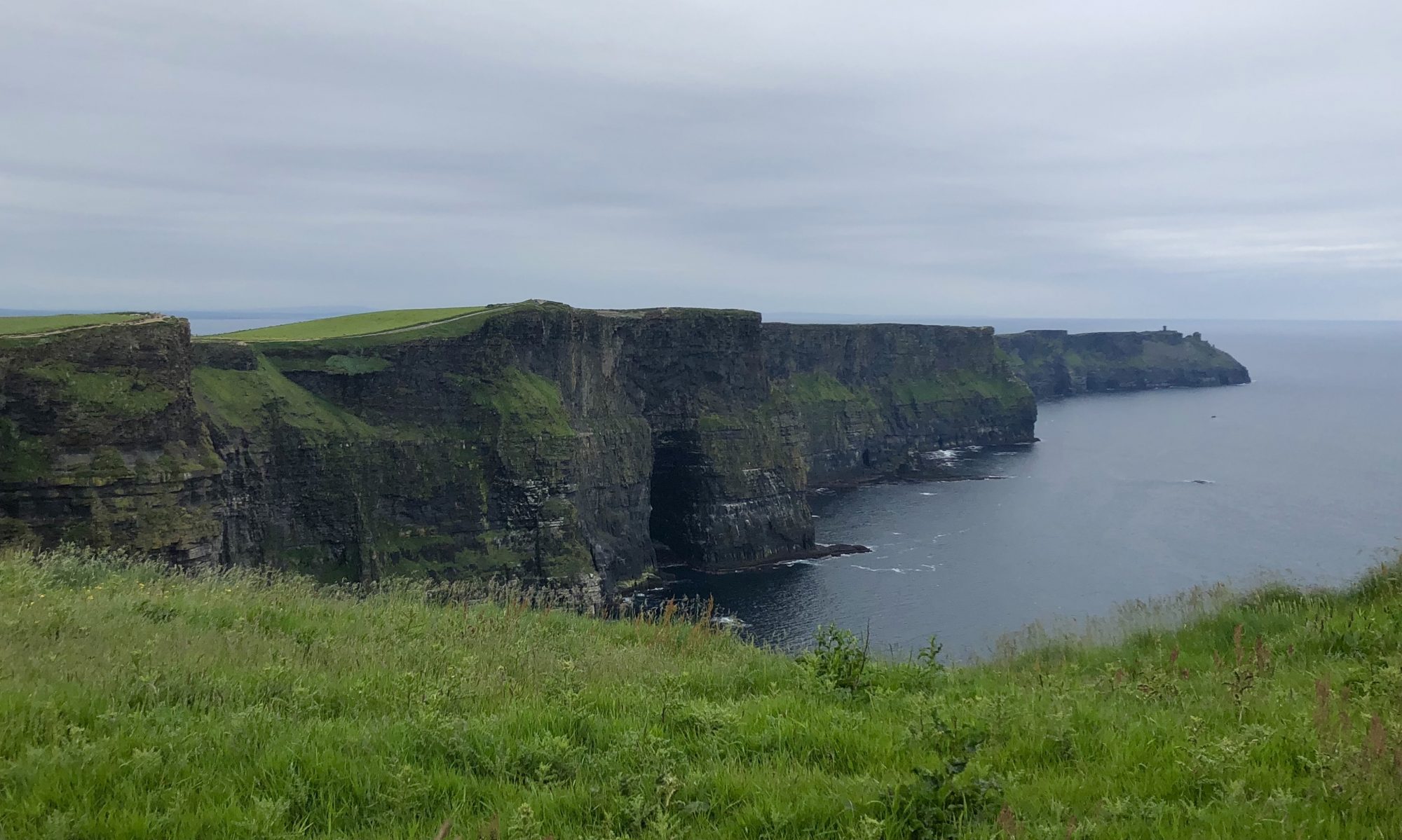
I have always embedded the First Peoples Principles of Learning into my lessons, but here is another way that I am trying to emphasize them in my practice. In my last practicum, I taught two Humanities 8 classes, and we focused on short stories. When I started my planning, I decided to embed the Principles into my short story unit. I focused on three of the Principles that I felt could best be weaved into the learning, and focused on in my lessons. Particularly because this unit explored short stories, and their components, I felt it was important to refer to, “Learning is embedded in memory, history, and story.” This was reflected through the stories we read, as I included some that were more contemporary, as well as a few from the canon. I emphasized, “Learning is holistic, reflexive, reflective, experiential, and relational (focused on connectedness, on reciprocal relationships, and a sense of place,” because there is a significant power in the connection that students can make to, and between, stories. Furthermore, since two of the stories are written by Canadian Indigenous authors, it was important for me to be able to reflect this Principle throughout my unit, as I wanted students to make connections between the two stories. Finally, I also embedded, “Learning involves patience and time,” as I hoped that the longer we spent with the six short stories that learned from, that students would make new ideas and larger connections between the texts and the world. When reflecting on this practicum experience, I can say that I was highly impressed with my students’ engagement with, and responses to, the stories.

